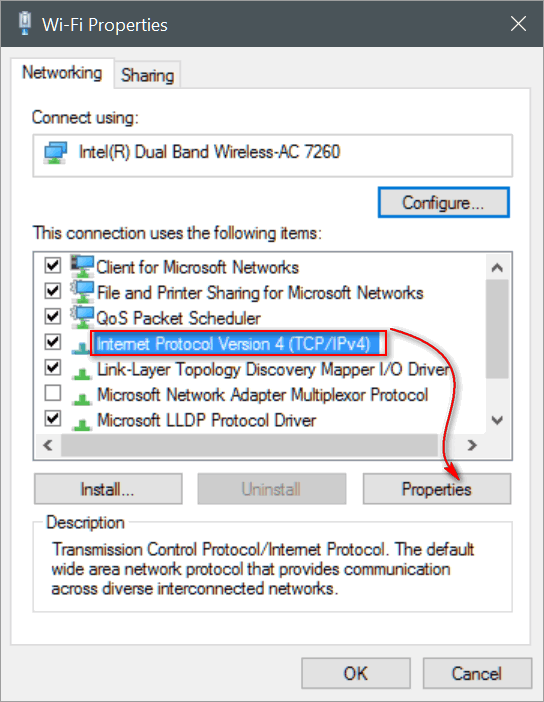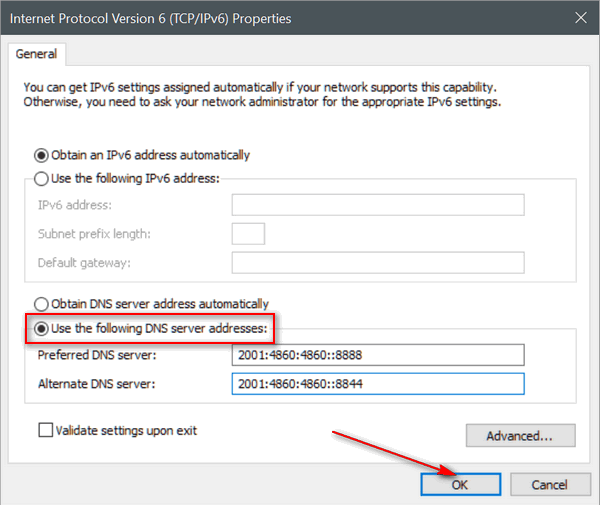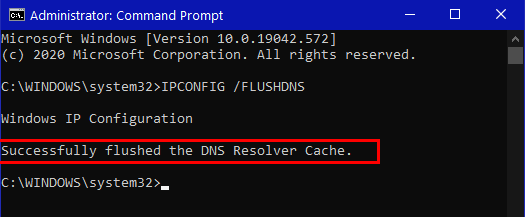How to Change Your Windows DNS Settings & Why You May Want to
First, let’s discuss what DNS servers are. Don’t worry – we’re not going to get all technical on you. We will define DNS servers as simply as possible. However, you don’t need to know what a DNS server is to use this tip, but you should have a basic understanding of DNS and what DNS servers do.
So, here’s a simple definition of DNS and DNS servers from Lifewire’s “What is a DNS Server”:
The Domain Name System (DNS) is a technology standard for managing names of public Web sites and other Internet domains. DNS technology allows you to type names into your Web browser like lifewire.com and your computer to automatically find that address on the Internet. A key element of the DNS is a worldwide collection of DNS servers.
A DNS server is any computer registered to join the Domain Name System.
A DNS server runs special-purpose networking software, features a public IP address, and contains a database of network names and addresses for other Internet hosts.
DNS Root Servers
DNS servers communicate with each other using private network protocols. All DNS servers are organized in a hierarchy. At the top level of the hierarchy, so-called root servers store a complete database of Internet domain names and their corresponding IP addresses…
In other words, when you type in https://www.microsoft.com/ you’re actually typing a numerical address like 207.46.129.3 which is resolved by the DNS server to the name you know and love… www.microsoft.com. Due to security issues, many sites will block attempts to directly reach the site by typing in its numerical address…but whoa! We’re getting in way too deep.
Without DNS servers you’re not going to get anywhere on the Internet. And if you have not changed your DNS settings, the first DNS server you’ll use to get to the Internet and the Web sites you want to visit is your Internet Service Provider’s DNS server(s). However, you’re not stuck using your ISP’s DNS servers. You have options. The option we’re going to show you today is to use Google’s public DNS servers, which will let circumvent your ISP’s DNS servers.
Lately, we have had several people who were unable to access certain sites at certain times. Sites would randomly be available. In at least two cases, while working with customers using our Cloudeight Direct Computer Care service, we found that customers could not access Facebook. And one of them could not access Facebook, Twitter, and other sites she liked. In all these cases, instead of the web sites loading, they got a DNS error.
You’re most likely using your ISP’s DNS servers. But you don’t have to. Instead, you can use DNS servers run by third parties. Three of the most popular third-party DNS servers are Google Public DNS. Cloudflare’s Public DNS and OpenDNS. We’re going to show you how to change your DNS settings from your ISP’s default settings to Google Public DNS. And at the end of this article, we link to pages showing you how to use
Using Google’s Public DNS may make your connection a little faster and a little more secure
If your ISP is not updating its DNS settings and/or is lax about their DNS security, using an alternate public DNS service like Google’s (or others) can help increase the speed and security of your connection. And using a third-party DNS service can help block phishing and other counterfeit sites.
As far as speeding up your connection we must tell you this. Please don’t think by changing your DNS settings you’re going to significantly improve the speed of a slow Internet connection and make it fast – it’s not going to happen.
Google’s Public DNS servers are fast and secure.
So, let’s change our Internet adapter settings to use Google’s Public DNS:
Step One: Go to Control Panel —> Network & Sharing Center.
Step Two: In Network & Sharing Center click on “Change adapter settings” (it’s on the left side).
Step Three: Right-click on your Wi-Fi or Ethernet Adapter and click on “Properties”. (If you use both Ethernet and Wi-Fi, you’ll have to both adapters, one at a time).

In the Properties dialog find “Internet Protocol Version 4 (TCP/IPv4), click it to highlight it, then click “Properties”:

In the TCP/IPv4 properties dialog, tick the circle next to “Use the following DNS server addresses” and enter 8 8 8 8 next to the preferred DNS server and 8 8 4 4 next to
“Alternate DNS server”. Please note that you’ll have to press the space bar after entering each number. Press OK when you’re done.

After you press OK, you’ll be back in the Adapter Properties dialog. This time you’ll need to click on “Internet Protocol 6 (TCP/IPv6)” to highlight it, then click “Properties”.

In the TCP/IPv6 Properties dialog, tick the circle next to “Use the following DNS server addresses” and …
Next to “Preferred DNS server” enter the following (you can copy & paste if you like):
2001:4860:4860::8888
Next to “Alternate DNS server” enter the following (copy & paste if you like):
2001:4860:4860::8844

Keep in mind those numbers must be exactly as shown. So, double-check before you click OK.
Now you’re almost done. Open a command prompt (does not have to be an administrator command prompt) and type…
IPCONFIG /FLUSHDNS
and then press Enter. If you typed the command correctly, you’ll see the confirmation below: “Successfully flushed the DNS Resolver Cache”. If you don’t see that confirmation, then you typed the command incorrectly. Make sure you leave a space after IPCONFIG and before the slash.

And that’s it. If you ever want to change back to your ISP’s DNS servers, just got back to the IPv4 and IPv6 properties and tick the circle next to “Obtain DNS server address automatically.
You’ll need to run the IPCONFIG /FLUSHDNS command again.
If you’d rather not use Google’s free public DNS servers (although they are secure and free) you can use Cloudflare’s public DNS servers or OpenDNS public DNS servers. It’s your choice, I tells ya!


You guys are so smart. Not that I’m all that technical savvy but I really appreciate your knowledge of all things technical that you share with us. I wish I was that smart “sigh”. Keep up the good work and thank you!!